How to Safely Lower Bromine Levels in Your Hot Tub
March 05th, 2024
March 05th, 2024
Warm water bubbling around you, the steam gently rising into the evening air—your hot tub should be a sanctuary of relaxation. Yet, managing the chemical balance is crucial to maintaining this peaceful haven. Bromine, often chosen for its ability to stay stable at higher temperatures, plays a key role in sanitizing your hot tub. However, too much of it can turn your calming soak into an unpleasant experience, causing skin irritation and a strong chemical smell.
I remember when I first encountered the overstated presence of bromine in my own hot tub. The sharp odor was a giveaway, but the real kicker was the itchiness that followed a brief dip. That was a wake-up call to not overlook the chemical balance, which can be surprisingly easy to shift.
Solutions are simpler than one might expect, and they don't require a chemistry degree. Whether you’ve accidentally added too much bromine or are just looking for a natural reduction method, there are practical steps you can take. In the following sections, we'll explore two straightforward methods to lower bromine levels in your hot tub, ensuring your spa-like retreat remains a place of rest rather than irritation. By implementing these strategies, you can enjoy a perfect soak, every time.
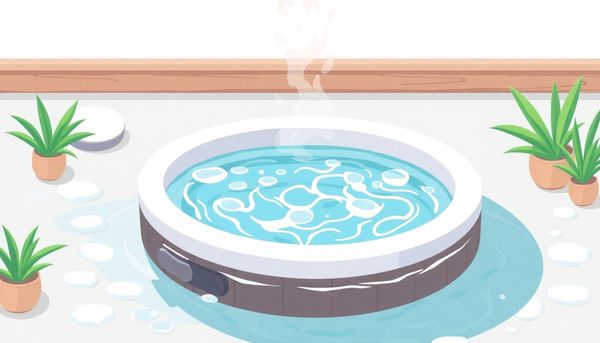
Monitoring bromine levels in your hot tub is like keeping tabs on a beloved pet—you want to ensure it’s healthy and thriving without any hiccups. Testing is your best friend here, and getting familiar with test strips or a liquid test kit can make all the difference. With test strips, you can swiftly gauge the bromine concentration, along with other chemical levels like pH and alkalinity. These handy tools often read multiple parameters, so double-check that your choice includes bromine. If you're unsure about using them, guides on water testing can shed light on accurate testing techniques.
Once a week, or more frequently if you're an avid soaker, dip a strip in the water to measure your bromine levels. Ideally, you want to maintain bromine between 3-5 ppm to ensure your tub remains a safe and pleasant haven. However, using hot tub features such as a bromine floater or tablets requires you to scrutinize your levels more closely. It’s incredibly easy to over-sanitize if you’re not careful with dosing, especially with automated systems.
Balancing act doesn’t stop with bromine, though. Other elements like pH and total alkalinity can throw the chemistry off-kilter. Regularly testing these will help maintain overall harmony in your tub's ecosystem. Remember, testing isn’t just a chore; it’s a step towards a safer and more enjoyable hot tub experience.
Understanding when your hot tub has too much bromine can be challenging since bromine lacks a strong odor. Relying on reliable test strips becomes essential. These handy tools are like a weather forecast for your spa water, showing you the unseen elements lurking beneath the surface. The strips aren’t just for bromine; they typically measure a variety of elements, including pH and alkalinity, ensuring that your hot tub remains a sanctuary rather than a hazard.
When I first started managing my own hot tub, I was overwhelmed by the chemical juggling act required. Test strips, however, quickly became my ally. They’re straightforward to use, even for the most chemistry-averse among us. Dip a strip into your hot tub water, wait a few seconds, and watch as the colors change. Compare these colors to the guide provided on the strip packaging, and voilà, you have a clear picture of your water’s health.
Regular testing, ideally once a week, is crucial, especially if you’re frequently adding bromine to maintain sanitation. This routine helps prevent the creeping rise of bromine levels that can corrode your equipment and irritate users. Remember, keeping your hot tub’s chemistry balanced is not just about bromine; pH, alkalinity, and other factors play their roles. With a reliable test strip in hand, you can ensure your hot tub remains an oasis of relaxation.
Understanding the delicate dance of bromine levels in your hot tub is essential to ensuring safe and enjoyable soaks. Bromine acts as a guardian, keeping your water free from unwanted bacteria, but when it oversteps its bounds, the consequences can include equipment damage and health issues. It's like having a vigilant watchman who occasionally decides to turn the lights on too bright.
To prevent this, the first step is to halt any additional bromine inputs immediately. This could mean removing any floater or turning off the automatic feeder. It's like stopping the tap when your cup overflows. With bromine, patience pays off as levels naturally decline over time. You can encourage this process by uncovering your hot tub and activating the jets, allowing evaporation to work its magic. Here, the water level acts as a gauge – evaporating too much water can expose the skimmer, so keep an eye on it.
If time isn't on your side, consider a partial drain and refill, a method akin to changing the scenery to refresh the atmosphere. Alternatively, a bromine neutralizer can serve as a quick fix, though caution is advised to avoid an overzealous application. It's the difference between gently dimming the lights and turning them off entirely.
In our experience, balancing bromine requires vigilance but rewards with leisurely, worry-free soaks. Consistent testing using reliable test strips or kits ensures you maintain that sweet spot, where your hot tub remains a tranquil haven rather than a chemical challenge.
Managing bromine levels in your hot tub is akin to maintaining a delicate balance, one that ensures both the longevity of your equipment and the safety of your soaks. Recognizing the importance of proactive adjustments can save you from the headache of over-sanitizing. Begin by assessing how often you use your hot tub and the dosing of bromine you typically employ. If your hot tub is more of a weekend retreat than a daily ritual, consider scaling back on the bromine input to prevent accumulation.
Gradually introducing this habit of mindful monitoring can transform your hot tub maintenance from a chore into a seamless routine. Regular water testing becomes your strongest ally in this endeavor. Employ fresh test strips weekly to gauge the bromine levels accurately. If you notice a creeping rise in levels, immediate action can prevent long-term issues. Reducing bromine isn’t just about water; it’s about understanding how your hot tub usage impacts chemical needs.
Incorporate natural methods to lower bromine, such as leaving the cover off to allow for evaporation or replacing a portion of the water. These strategies not only adjust bromine levels but also infuse the tub with fresh water, enhancing the overall bathing experience. By staying vigilant and responsive, you ensure that your hot tub remains a safe and enjoyable sanctuary, free from the risks associated with excessive bromine.
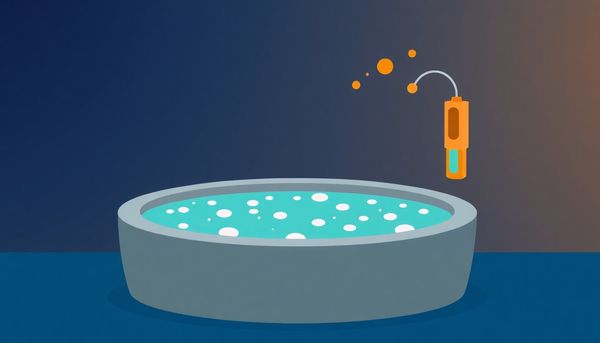
When it comes to maintaining a hot tub, unwittingly dosing too much bromine is a common hiccup. While most folks rely on automatic feeders or floating dispensers for convenience, these devices can sometimes go rogue, delivering excessive amounts of bromine into your water. Remember the last time you walked into your local café and ordered an extra shot in your latte, only to find it too strong? That’s the same sort of imbalance your hot tub experiences with too much bromine.
To stop excess bromine dosing, start by taking control of the situation. First, disable any automatic feeders or remove floaters from your tub. Imagine these as the baristas of your hot tub, each diligently adding more bromine shots. By turning them off, you halt further dosing and give your water a chance to find its natural balance.
Next, make it a habit to test your water frequently, especially after heavy use. Testing is like checking the weather before heading out; it helps you decide if you need a raincoat or, in this case, whether it's safe to dip in. Use fresh test strips for accuracy and note any unusual readings. If levels are consistently high, consider partially draining and refilling your tub. This dilution method is as refreshing for your hot tub as a glass of water is after that overly strong latte.
Consistently monitoring and adjusting bromine levels ensures your tub remains a haven of relaxation, rather than a chemical bath. By taking these simple steps, you can preserve both your hot tub’s health and your own.
Detecting and managing bromine levels in your hot tub is akin to maintaining a delicate balance; it's a crucial step that can save both your skin and your hot tub. To ensure you're not swimming in a bromine soup, using test strips is your best armor. These nifty little tools offer a snapshot of your hot tub’s chemical kingdom, measuring not just bromine, but other elements such as pH and alkalinity. When I first started tinkering with hot tubs, I was baffled by the chemistry involved, but regular testing soon became second nature, much like checking the oil in a car.
Test your water weekly, especially if your hot tub sees frequent gatherings or those long, relaxing soaks that stretch into hours. Consistent monitoring prevents over-sanitization, which can lead to corroded parts or even respiratory discomfort. Testing after adding chemicals is essential; it’s easy to tip the scales when tweaking bromine levels. Always aim for that sweet spot between 3-5 ppm (parts per million), or 1 ppm if you employ a mineral floater.
A friend once ignored this routine, only to face an eye-watering surprise—not the kind of tears one hopes for in a relaxation session. Balancing bromine, along with keeping an eye on other chemical components, ensures your hot tub remains a haven of tranquility and not a bubbling cauldron of mishaps.
Bromine is an essential ally in keeping hot tub water pristine, yet excessive amounts can spell trouble. Adjusting your bromine dosing methods is a surefire way to maintain balance and ensure a comfortable soak.
Firstly, reconsider the frequency and quantity of bromine addition. If your hot tub hosts fewer guests than anticipated, the buildup can occur simply because you're adding it at the same rate. Reflect on your hot tub usage patterns and adjust your dosing accordingly. For instance, if your hot tub serves more as a decorative backyard feature than a nightly relaxation ritual, weekly bromine checks might be sufficient instead of daily.
Exploring different bromine delivery systems can also make a significant difference. While granules offer control over immediate changes, floaters provide a more gradual and consistent release. This steady approach might prevent sudden spikes in bromine levels. If you’re using an automatic feeder, ensure that it’s calibrated correctly; sometimes, the settings can be inadvertently set too high.
Remember, it’s not just about reducing the addition of bromine but also ensuring the water chemistry supports its optimal performance. Regularly balance the pH and alkalinity, as they can influence bromine's effectiveness. Personally, I noticed a remarkable change in water feel when I began testing and balancing these levels more frequently. A simple tweak in your routine can transform your hot tub experience from a potential hazard into a serene escape.
Neutralizers can be a real lifesaver when you're in a bind with high bromine levels in your hot tub. These chemical compounds, often found under the name "chlorine neutralizers," work wonders for bromine too, thanks to their active ingredient, sodium thiosulfate. I remember a time when I was eager for a relaxing soak, only to find my bromine levels sky-high. Waiting it out wasn’t an option. A quick dash to the local pool supply store for some neutralizer turned my frustration into relief in minutes.
Using a neutralizer is straightforward but requires a careful hand. You’ll want to follow the instructions on the package closely—too much can overcorrect and leave your water unprotected. Generally, you’ll dissolve the recommended amount in a bucket of warm water before adding it to your hot tub. It acts quickly, often dropping bromine levels within an hour or two. While this method is swift, it’s best reserved for occasional use, especially during those times when guests are on their way, and you need a quick fix.
Once the neutralizer has done its job, it’s crucial to retest your water. This ensures you're not swinging from one extreme to the other. By keeping a bottle of neutralizer in your spa maintenance kit, you'll be prepared for those unexpected spikes, ensuring your hot tub remains both safe and inviting.
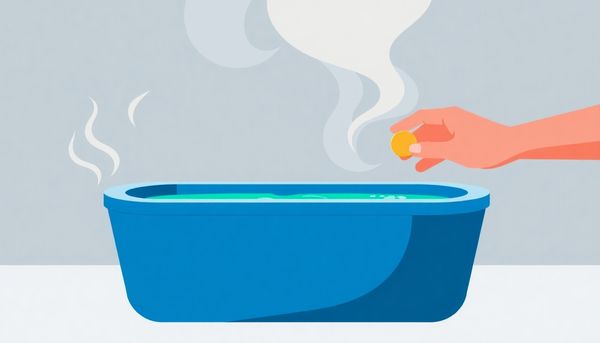
Hot tubs, those steamy sanctuaries, can ironically become a problem when bromine levels soar. Fortunately, there's a straightforward remedy that involves harnessing a simple yet effective method: boosting evaporation.
Every hot tub owner knows the significance of proper maintenance, and sometimes, the solution lies in embracing natural processes. Begin by removing the hot tub cover. This uncomplicated act allows exposure to the open air and, even better, sunlight—both of which serve as catalysts for evaporation. The science is straightforward: as water molecules transition from liquid to vapor, they take some of that excess bromine along for the ride.
Kickstart this process by activating your hot tub's jets. The swirling water creates a larger surface area for evaporation, accelerating the reduction of bromine levels. However, keep a close eye on your water level. It's essential that it doesn't dip below the skimmer port to ensure the hot tub continues to function correctly.
After the water has evaporated for a bit, you’ll notice a drop in the water level. This is your cue to introduce fresh, filtered water back into the mix, diluting the remaining bromine further. Before you hop back in, grab a test strip to confirm that the bromine levels have decreased to within the safe zone. Just like that, with a bit of time and nature’s assistance, your hot tub becomes a welcoming retreat again.
When it comes to restoring balance in your hot tub, utilizing water evaporation techniques can be a straightforward and effective solution. After realizing the bromine levels are off the charts, you might feel a tad overwhelmed. But fear not—sometimes, the simplest approach can make all the difference. By harnessing the natural process of evaporation, you can significantly reduce bromine concentration in your spa.
Begin by lifting the cover off your hot tub. This allows the water to breathe and encourages evaporation, which in turn helps the excess bromine escape into the atmosphere. Turning on the jets further accelerates this process, creating movement that facilitates evaporation. It’s a bit like letting steam escape from a hot pot—you’re letting the water, and thus the bromine, dissipate. Just be sure that your water level doesn't fall too low, especially below the skimmer port, as it might compromise the circulation and filtration systems.
With the cover removed and jets agitating the water, bromine levels should start to drop. You’ll notice the water level descends as well. When it’s gone down a few inches, top it up with fresh, filtered water. This not only replenishes your tub but also dilutes the remaining bromine concentration, bringing levels closer to that safe zone. Always remember to test the water again afterward to ensure everything’s balanced.
And don’t forget, regular maintenance and monitoring are key. Keeping a routine will prevent these spikes in bromine and ensure your next soak is as safe and relaxing as possible.
Overindulging in bromine additives in your hot tub is akin to adding too much salt to a dish—easily done, yet avoidable with a little mindfulness. Without a doubt, the simplest way to curb high bromine levels is to cease any additional bromine input. This might involve turning off the automatic feeder, removing bromine tablets or floaters, or simply halting granule additions. If you're accustomed to routines, this might take a bit of adjustment, but it's the most straightforward path to balance.
Each time you add bromine, you should consider the tub's usage frequency. Hot tubs that sit idle most of the week don’t require the same bromine boost as those that see daily splashes. By aligning bromine additions with your hot tub's actual use, you prevent unwanted spikes in bromine levels. This personalized approach not only ensures user comfort but prolongs the life of your hot tub's components.
Once you've stopped adding bromine, nature steps in. Over time, the bromine will naturally dissipate, especially if you allow the water to breathe by removing the cover. Helping the process along with a bit of patience and fresh water can also make a world of difference. Before you know it, you'll be back to soaking without worry, your hot tub experience a blissful, irritation-free retreat.
In the world of hot tub maintenance, choosing to use a bromine neutralizer should be like deciding to put the cherry on top of a sundae—done thoughtfully and at the right moment. Bromine neutralizers, typically formulated with sodium thiosulfate, are potent tools designed to swiftly reduce bromine levels. They come in handy when you’ve accidentally overdosed your hot tub with sanitizer or need a quick fix before guests arrive. But be careful—these neutralizers are not for everyday use and should be handled with precision.
Think of a time when you've seasoned your dinner just a tad too much. A dash of salt is delightful, but overdo it, and it can overwhelm the dish. Similarly, while bromine neutralizers can quickly correct an imbalance, using them excessively can swing the pendulum too far the other way, leaving your hot tub defenseless against bacteria. Always start by consulting the product instructions to determine the precise amount needed. Remember, it’s easier to add more later than to reverse an overdose.
For those moments when patience isn't an option, such as before a much-anticipated soak with friends, a neutralizer is your go-to. But for regular maintenance, rely on consistent testing and natural methods like evaporation or dilution to keep your bromine levels balanced. This approach ensures your hot tub remains a welcoming oasis without the need for frequent chemical interventions.
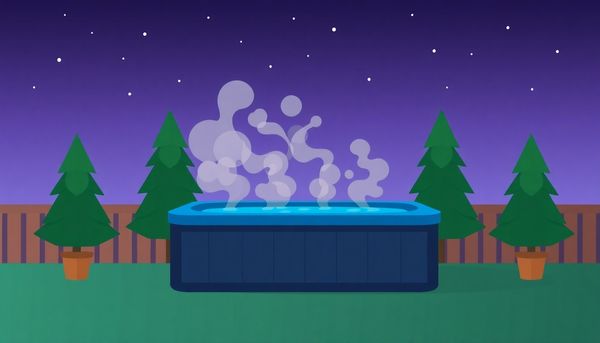
Neutralizers can be a real game-changer when you're in a pinch to lower bromine levels swiftly. These chemicals, primarily sodium thiosulfate, work like magic by neutralizing excess bromine in your hot tub, bringing it down to safer levels faster than traditional methods. Many hot tub owners consider this option when they're preparing for an impromptu soak or after unexpectedly high bromine readings.
From personal experience, a friend once decided to use her hot tub for a spontaneous evening gathering. The bromine levels were higher than expected, and with guests arriving in a few hours, the usual methods weren’t going to cut it. Enter the bromine neutralizer. With careful application following the product instructions, the problem was resolved in time for the party, with the water safe and inviting.
It’s crucial, however, to tread carefully. While neutralizers are effective, overuse can swing the balance too far, leaving your hot tub under-sanitized. Measure precisely and only use the recommended amount. It's wise to have a test strip handy to check bromine levels after applying the neutralizer. This way, you ensure all is well before you take the plunge into your hot tub.
In short, while neutralizers should be reserved for those moments when time is of the essence, they can be a valuable tool in your hot tub maintenance kit, ensuring your relaxation plans remain uninterrupted.
Testing and monitoring bromine levels in your hot tub can seem like a daunting task, but it's a straightforward and crucial step to ensure both the longevity of your spa and the safety of its users. Begin by grabbing a fresh set of test strips or a liquid test kit specifically designed for bromine readings. This tool will become your best friend for maintaining the ideal bromine concentration of 3-5 parts per million (ppm).
Regular testing is key. Consider this part of a weekly ritual, akin to watering plants or taking out the trash. If your hot tub sees heavy use, you might need to test more frequently. A consistent schedule helps catch any imbalances early, preventing potential damage to your hot tub components and avoiding uncomfortable skin irritations or respiratory issues.
Each test reveals more than just bromine levels; it also gives insights into the overall health of your water. Pay attention to pH and alkalinity readings as well, since they directly influence bromine's effectiveness. For instance, a high pH can reduce bromine's sanitizing ability, calling for adjustments to bring things back into harmony.
If you find your bromine levels stubbornly high, there's no need to panic. Simply cease any bromine additions and let natural evaporation or dilution through partial draining and refilling work its magic. For quicker results, a bromine neutralizer can be your ace in the hole, but use it cautiously to avoid overshooting your target.
In essence, regular testing isn't just about maintaining chemical balance—it's about ensuring a safe, enjoyable soak every time you slip into those inviting bubbles.
In a world obsessed with cleanliness, it might seem counterintuitive to hold back on sanitizing your hot tub. However, over-sanitizing with bromine can create more problems than it solves. Think of it like overwatering a plant; too much of a good thing can lead to a host of issues. Just as excess water can suffocate roots, excess bromine can corrode hot tub parts, damage pumps, and pose health risks to users. My neighbor once experienced a nasty rash due to high bromine levels, a stark reminder of the importance of balance.
To begin addressing this, the first step is simple: cease any further addition of bromine. Whether through granules, tablets, or a feeder, halting these additions allows your bromine levels to naturally settle. Unlike a rapid fix, this method requires patience, but it’s a reliable first step. For those who want to accelerate the process, open the hot tub cover and let the water evaporate. With the jets on, bromine dissipates faster, lowering its concentration in the water.
Remember, adjustments to bromine levels often involve changes to other water chemistry aspects, such as pH and alkalinity. Regular testing and rebalancing ensure that everything remains in harmony. So, while it’s tempting to reach for the sanitizer, sometimes less truly is more, preserving both the quality of your hot tub and the safety of those who enjoy it.
Nothing quite spells relaxation like a hot tub soak, but when bromine levels spike, the soothing experience can swiftly turn sour. With potential effects ranging from equipment damage to respiratory irritation, quick action is key. Enter neutralizers, your swift solution to high bromine woes. These chemical agents, particularly those containing sodium thiosulfate, are the heroes of the hour, designed to target and neutralize excess bromine efficiently.
Imagine hosting a spontaneous evening soak for friends, only to realize that bromine levels are off the charts. Instead of postponing, reach for your neutralizer. Sodium thiosulfate works by chemically bonding with bromine, rendering it inert and swiftly reducing its concentration. This means you can bring your hot tub back to safe levels without the wait for evaporation or dilution.
However, precision is crucial. Overzealous application of neutralizers can swing the pendulum too far, leaving you with insufficient bromine for effective sanitation. Always start with conservative doses and retest the water to fine-tune the balance. Many hot tub enthusiasts find that a little goes a long way, instantly transforming a potential party pooper into a cherished lifesaver.
Ultimately, while neutralizers can rescue a high-bromine situation in a flash, maintaining a regular testing routine is the best prevention. Keep a bottle of neutralizer on hand for those unexpected spikes, but remember, consistent care is your best ally in achieving the perfect soak every time.
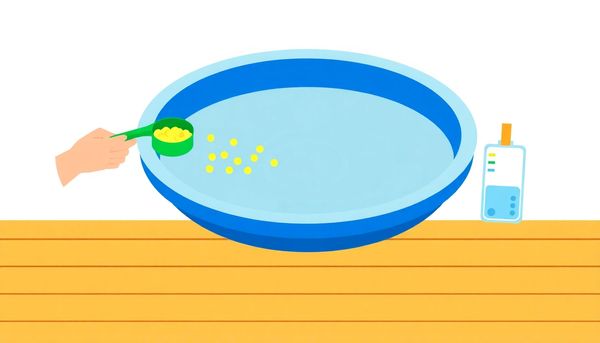
Balancing bromine levels in your hot tub can often feel like a juggling act, but there's a straightforward solution that can put you back in control: the drain and refill method. This approach is akin to giving your hot tub a breath of fresh air. By simply removing a portion of the existing water and replacing it with fresh, filtered water, you can effectively dilute the bromine concentration. This method not only lowers bromine levels but also refreshes the overall water chemistry, which can become skewed over time.
In my own experience, I've found that draining about one-third of the hot tub water and refilling it works wonders—not just for bromine but for a general reset of the water balance. It’s important to remember that while this method is effective, it requires a careful eye on other chemical levels. After refilling, always test and rebalance crucial elements like pH and alkalinity to ensure a harmonious blend. A friend of mine once skipped this step and ended up with cloudy water that took extra effort to clear.
While the drain and refill approach does require a little elbow grease, the payoff is worth it. The fresh water not only feels revitalizing but also ensures your hot tub stays inviting and safe. This simple maintenance step can help you enjoy your hot tub without the worry of excess bromine, keeping everything in perfect equilibrium.
In the realm of hot tub maintenance, testing and monitoring bromine levels is akin to nurturing a delicate plant—it demands attention, precision, and a dash of patience. Regularly keeping a close eye on these levels is vital, not only for the longevity of your hot tub but also for ensuring a safe and pleasant experience for users. Bromine might not announce its presence with a sharp odor, unlike its counterpart chlorine, but it can silently wreak havoc if left unchecked. A reliable way to assess bromine presence is by using test strips, which measure several water chemistries including bromine itself.
Set a routine to test your hot tub water once a week. If your hot tub sees frequent visitors, consider increasing the frequency of these tests. This ensures you're not inadvertently overloading the water with sanitizers. I remember when I first started using test strips; it felt like unlocking a secret code, watching those colors shift and reveal the water's hidden chemistry. It quickly became second nature, a small ritual that promised peace of mind.
Once you determine your bromine levels, it's crucial to balance them alongside other chemical parameters, such as pH and alkalinity. These factors intertwine in the water's dance, each influencing the others. If bromine levels drift beyond the safe zone—ideally between 3-5 ppm—adjust accordingly. Whether it's by reducing bromine input or employing gentle water balancing techniques, staying proactive is key. After all, a well-maintained hot tub is a haven, not just a tub of water.
In the world of hot tubs, it's all about balance. Too much bromine can turn a relaxing soak into a skin-irritating, equipment-damaging dilemma. The simplest first step in managing bromine levels is to cease any additional bromine introductions. Often, the root of the issue lies in overzealous additions—whether through tablets, floaters, or automatic feeders. If you find yourself in this situation, pause and reassess.
For a friend of mine, this was a revelation. She realized her automatic feeder was set too high, continually adding bromine to an already saturated tub. By simply turning it off and removing the floaters, she allowed natural dissipation to take its course. Within a day or two, her levels had dropped significantly without any further intervention.
Nature is your ally here. Bromine will naturally decrease over time, especially with a bit of help. By removing your hot tub cover and running the jets, evaporation accelerates the process, allowing bromine to escape into the air. As the water level drops, remember to add fresh water to maintain the balance and keep your equipment safe.
Through regular testing and adjustments, you'll find that keeping bromine levels in the sweet spot of 3-5 ppm becomes second nature. In a pinch, when time is of the essence, a bromine neutralizer can offer a quick fix, but careful use is key to avoid overcorrection.
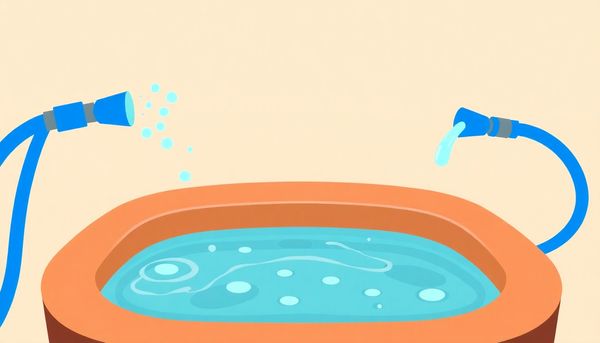
This article provided insights into maintaining your pool. Start your pool care journey today!
Want to become a pool maintenance expert? Our free Pool School course covers everything you need to know about pool care. From basic maintenance to advanced troubleshooting, you'll learn how to:
Join over 10,000 pool owners who have already transformed their pool care routine. Get started with our free Pool School course today!